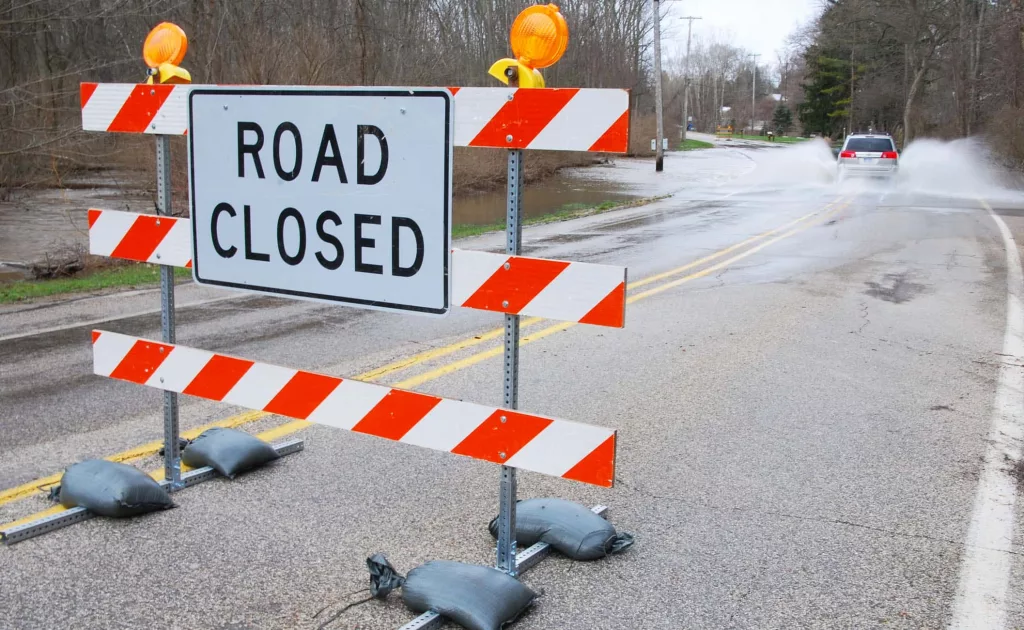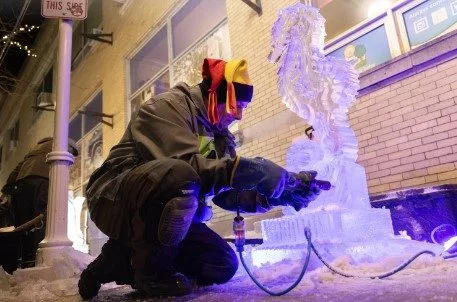Authorities continue to sound the alarm about emergency preparedness across Michigan’s Great Southwest as storm conditions continue to increase the threat of additional flooding in an already saturated region. Social media pages are filled with status updates showcasing short videos of rapidly running water over open roadways, images of cars trapped beneath flood waters in low lying areas of the region, and tales of woe regarding extensive flooding in side yards, basements, and elsewhere.
The Berrien County Sheriff’s Office Division of Emergency Management is working with area first responders, transportation officials, public health officials and local municipal leaders to address the widespread flooding in Berrien County.
The Berrien County Health Department advises residents with well water systems to inspect the area around their well for flooding. If flood waters have impacted the well system, drinking water may become contaminated. If the well head is damaged, compromised, or has been submerged in flood water, residents should immediately discontinue use of the well water for drinking, cooking, and/or bathing and should use bottled water until their well system is safe for use again. After flood waters have receded, residents can contact the Berrien County Health Department for more information on how to test their well water system for safety
The following are terms you should be aware of when preparing for a possible flood situation:
- FLOOD WATCH: Flooding is possible in your area
- FLASH FLOOD: Rapid flooding, usually in low lying areas. Water floods with great force.
- FLASH FLOOD WATCH: Flash flooding is possible in your area
- FLOOD WARNING: Flooding is occurring or will occur in your area. Move to higher ground and listen to local media for evacuation orders
- FLASH FLOOD WARNING: A flash flood is occurring. Seek higher ground and listen to local media for evacuation orders.
In preparing for a flood authorities are asking you to make sure you have an emergency preparedness kit available that contains a 72 hour supply of water, medications and essential items in case you are required to leave your home.
Many low lying roads throughout Berrien County are now currently underwater, washed away or are generally impassable. The Berrien County Road Department is working diligently to get these roads identified and place barricades where needed. Below is a link to the map that is provided by the Berrien County Road Department on their website, and is continually updated to show current conditions:
http://bcroad.org/maps/Berrien%20County%20Water%20over%20road%20map.pdf
Motorists are reminded to not attempt to drive through a flooded road. The depth of the water is not always clear and the road surface below the water can be compromised which may not be visible to those attempting to enter such waters.
Do not drive around a barricade. Barricades are in place for your protection and safety. Instead, turn around and find an alternative route to your destination. Be especially cautious when driving in the dark as it is harder to identify and recognize water over the roadway.
Floods can be both damaging and life-threatening. While flooding is most prevalent near low-lying areas and bodies of waters such as rivers and streams, it can occur almost anywhere.
For more information about what to do before, during and after flooding, you can go to the linkk below:
http://www.michigan.gov/miready
To report damage caused by flooding or a disaster you can go to the following link:
http://www.bcsheriff.org/FormCenter/Emergency-Management-14/Report-Disaster-Damage-66
This form is not used to report an emergency or request emergency assistance. You need to call 911 for an emergency situation.
Michigan State Police and Homeland Security officials are also sharing information regarding flood conditions. Capt. Chris Kelenske is Deputy State Director of Emergency Management & Homeland Security as well as Commander of the Michigan State Police Emergency Management & Homeland Security Division. He tells us, “Floods can be both damaging and life-threatening.” Kelenske adds, “Residents should take steps to prepare and stay safe. They should protect their property against any flooding hazards and check to ensure they are covered by insurance. When traveling, please be careful and do not drive through flooded roads.”
While flooding is most prevalent near low-lying areas and bodies of water, it can occur almost anywhere, including near small streams, creeks and even basements. Flash floods are the No. 1 cause of weather-related deaths in the U.S., according to the Federal Emergency Management Agency.
Here are tips from the Michigan State Police for Preparing for a Flood
- Create an emergency preparedness kit with a 72-hour supply of water, including three gallons per person.
- Scan and store important documents on an online, cloud-based program.
- Put important documents and valuables in a water-proof container on the top floor of your home.
- Check with your utility to learn how to safely turn off electricity and gas lines in your home.
- Create an inventory of your household items and take photos of the interior and exterior of your home.
- Consider installing sewer backflow valves to prevent flood water from backing up into your home through drain pipes.
- Double-check sump pumps to ensure they are working properly. If possible, have a battery backup system.
- Keep materials like sandbags, plywood, plastic sheeting and lumber handy for emergency water-proofing.
- Find out how many feet your property is above and below possible flood levels. When predicted flood levels are broadcast, you can determine if you may be flooded.
- Raise or flood-proof heating, ventilating and air conditioning equipment by elevating equipment above areas prone to flooding. Another method is to leave equipment where it is and build a concrete or masonry block flood wall around it.
- Anchor fuel tanks. Unanchored fuel tanks can be easily moved by floodwaters.
- Residents who live near a storm drain should clear the drains of snow and other debris.
State Police also offer these suggestions for what to do during a flood:
- Turn off utilities if instructed to do so. Disconnect all electrical equipment.
- Do not walk through moving water. Six inches is enough water to knock you down.
- Listen to local media reports for information on whether the water supply is safe to drink.
- Avoid contacting flood waters because they can be contaminated by hazardous liquids and may contain sharp debris.
- Report and stay 25 feet away from downed power lines.
They also addressed driving in flood conditions, saying:
- Six inches of water will reach the bottom of most passenger cars causing loss of control and possible stalling. A foot of water will float many vehicles.
- Two feet of rushing water can carry away most vehicles including sport utility vehicles (SUVs) and pickup trucks.
- Do not attempt to drive through a flooded road. The depth of water is not always obvious. The road bed may be washed out under the water, and you could be stranded or trapped.
- Do not drive around a barricade. Barricades are there for your protection. Turn around and go the other way.
- Do not try to take short cuts—they may be blocked. Stick to designated routes.
- Be especially cautious driving at night when it is harder to recognize flood dangers.
In addition to flooding preparedness, residents are encouraged to purchase flood insurance. Homeowners’ or property owners’ insurance does not typically cover flood damage.
The National Flood Insurance Program (NFIP) estimates that 90-percent of all natural disasters involve flooding. An inch of water can require a property owner to replace carpet, drywall, floor boards, moldings, doors and other belongings. Additionally, clean-up of mud and residue can be costly, as can repairing any mold and mildew damage that may occur.
For more information about what to do before, during and after flooding, go to www.michigan.gov/miready or follow the MSP/EMHSD on Twitter at @MichEMHS.
The Michigan State Police, Emergency Management and Homeland Security Division is responsible for coordinating state and federal resources to assist local government in response and relief activities in the event of an emergency or disaster, as well as coordinating homeland security initiatives and various federal grants.






